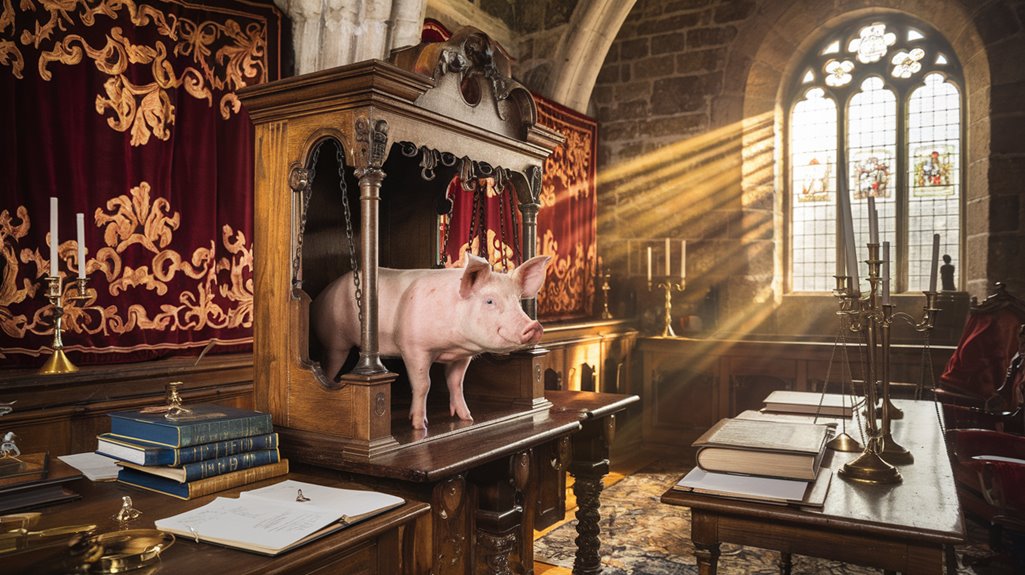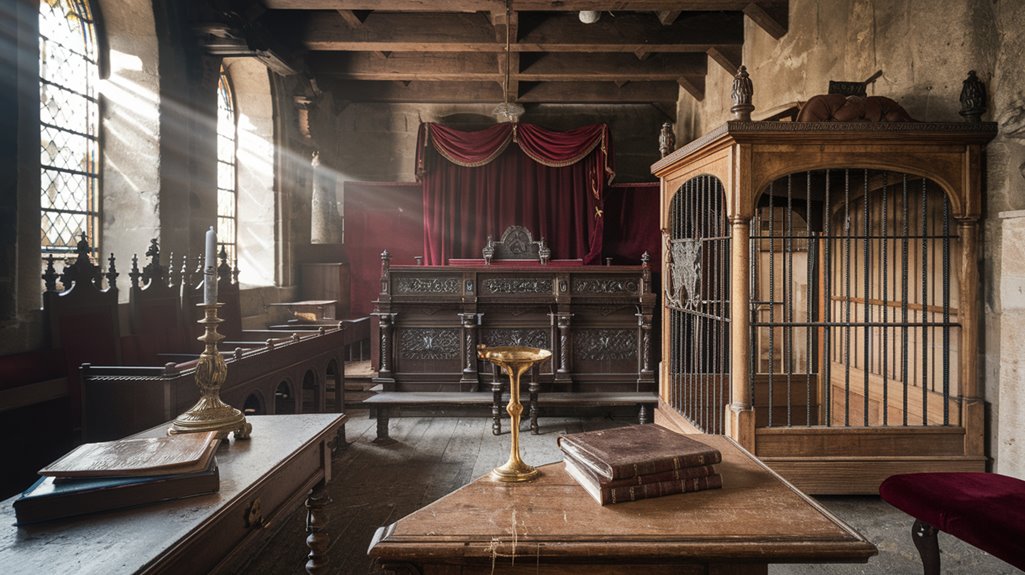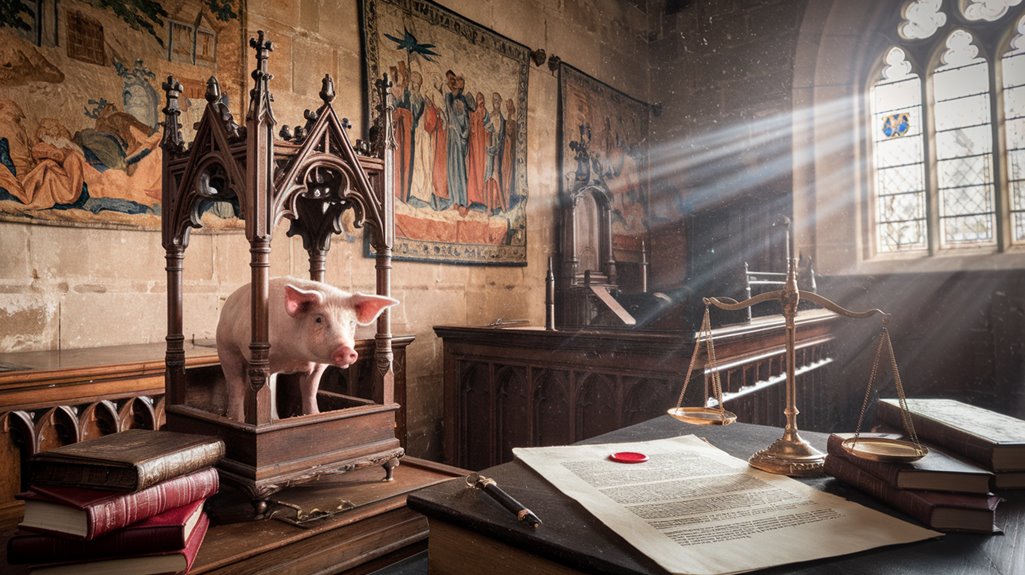Medieval Europe Held Animal Trials
You might be surprised to learn that medieval courts once put animals on trial with the same gravity they reserved for human defendants. While today's legal systems focus exclusively on human conduct, your medieval ancestors wouldn't think twice about summoning a pig to court or appointing a lawyer to defend a swarm of locusts. These peculiar proceedings weren't just random acts of judicial theater—they reflected deep-seated beliefs about morality, religion, and humanity's relationship with the natural world.
The Strange World of Medieval Animal Justice

While modern courts exclusively try humans, medieval Europe took a remarkably different approach by putting animals on trial for their alleged crimes. From the ninth to nineteenth centuries, you'd find courtrooms filled with unusual defendants – from rats and moles to pigs and roosters. Over two hundred documented animal trials were recorded during this period.
This peculiar system of medieval justice wasn't just a bizarre anomaly; it reflected deep-rooted cultural and religious beliefs about animal personhood. These cases were particularly prevalent in southern and western France, where communities pursued justice against animals with notable intensity.
You might be surprised to learn that these trials followed strict legal protocols, complete with defense attorneys and formal proceedings. In one famous case, lawyer Barthélemy Chasseneux argued that his rat clients couldn't appear in court due to travel difficulties.
The practice stemmed from a society that viewed animals as God's machines, meant to function according to divine programming, and when they didn't, they faced the full force of the law.
Types and Procedures of Animal Court Cases
Because medieval Europe's legal system sought to maintain order over both humans and animals, two distinct types of courts emerged to handle animal-related offenses.
Secular courts dealt with individual animals that harmed humans or property, while ecclesiastical courts focused on groups of pests damaging crops.
You'd find that these trials weren't simple affairs – they reflected complex views on animal rights and justice.
Animals received legal representation, with lawyers crafting clever defenses based on Christian teachings or the creature's natural instincts to survive.
These trials required skilled executioners who traveled from distant locations to carry out the sentences professionally.
At least 85 recorded animal trials took place across Europe, with most occurring in France and Switzerland.
The punishments varied: secular courts often ordered executions by hanging at public gallows, while ecclesiastical courts might issue banishments or excommunications.
Some bishops even provided safe conduct for animals to leave the area peacefully, ensuring they wouldn't face harm from other creatures.
Notable Cases That Shaped Animal Legal History
The annals of medieval animal trials reveal fascinating landmark cases that fundamentally shaped how courts viewed animal defendants. Among the most famous animal trials, you'll find Bartholomew Chassenee's ingenious defense of rats, where he established legal precedents by arguing they couldn't appear in court due to the danger posed by local cats. Pigs were most commonly put on trial, with many cases involving sows attacking children.
In Stelvio, a groundbreaking 1519 case saw a bishop showing unprecedented compassion by granting safe passage to mice, including special provisions for pregnant and young ones. These trials were heavily influenced by the medieval Church's control over legal matters of the time.
Another pivotal case involved a donkey whose death sentence was reduced to corporal punishment upon appeal. In Normandy, a pig's execution served as a deterrent to other animals, while in Worms, Germany, an entire bee colony faced death by suffocation after a fatal sting.
The Cultural and Religious Roots Behind Animal Trials
Medieval animal trials emerged from a complex tapestry of religious doctrine and cultural beliefs that shaped society's view of the natural world.
You'll find Biblical justifications for these trials in passages from Exodus, Leviticus, and Deuteronomy, which the church used to establish their authority over nature's creatures.
Hierarchical beliefs placed God at the universe's summit, with humans positioned as superior to animals.
This worldview led people to see animals as divine machines, designed to function according to God's plan.
When animals deviated from their expected roles, whether by destroying crops or harming humans, they faced prosecution.
The earliest recorded case showed this practice in action when a pig was burned in 1266 for killing an infant.
The church's influence was particularly strong in ecclesiastical courts, where wild animals were tried, while secular courts handled cases involving domestic animals.
These trials served as ritualistic demonstrations of human dominion and social control.










